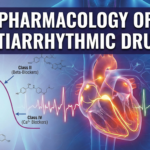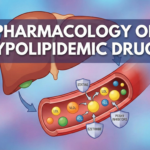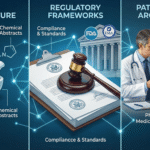Introduction and Chemical Nature
Danazol is a synthetic isoxazole derivative of 17α-ethinyl testosterone. It was developed for its unique endocrine properties and mild androgenic activity, making it useful in various gynecological and hematological conditions. Structurally, its modifications confer the ability to suppress gonadotropin secretion and interact with multiple steroid receptors.
Mechanism of Action
Danazol exerts a multifaceted mechanism:
- Suppression of Gonadotropin Secretion:
- Direct Inhibition of Steroidogenesis:
- Binding to Steroid Receptors:
- Immunomodulatory effects:
Pharmacokinetics
Clinical Indications
Dosing: Usual adult doses: 200–800 mg/d in divided or twice-daily dosing (lower doses for angioedema prophylaxis).
Adverse Effects
Contraindications:
- Pregnancy (teratogenic, virilization)
- Severe hepatic, renal, or cardiac dysfunction
- Known, suspected androgen-dependent tumors
- Porphyria
Drug Interactions
- CYP3A4 inhibitors or inducers may affect danazol metabolism.
- Warfarin, cyclosporine, statins: May increase toxicity due to shared metabolic pathways or plasma protein binding.
- May potentiate effects of insulin and oral hypoglycemic agents.
Clinical Pearls
- Danazol’s value in endometriosis and hereditary angioedema is established, but adverse effects (esp. androgenic, hepatic, and dyslipidemic) limit long-term use.
- Newer agents (GnRH analogs, aromatase inhibitors, and progestins for endometriosis; C1-INH, lanadelumab for angioedema) are preferred due to improved safety.
- Monitoring: LFTs, lipids, blood counts, and routine clinical assessment is mandatory for all patients on danazol.
References
- Goodman & Gilman’s The Pharmacological Basis of Therapeutics. 14th ed. New York: McGraw-Hill; 2022.
- StatPearls. Danazol [Internet]. 2024 Feb 27.
- Donaldson VH. Danazol: endocrine pharmacology and therapeutic applications. Ann Intern Med. 1989;111(6):403–412.
- Danazol—DrugBank. Updated Sep 2015.
- RxList. Danazol (Danocrine): Side Effects, Uses, Dosage, and More. 2023.
- Danocrine® US FDA label. Revised 2011.
📚 AI Pharma Quiz Generator
🎉 Quiz Results
Medical Disclaimer
The medical information on this post is for general educational purposes only and is provided by Pharmacology Mentor. While we strive to keep content current and accurate, Pharmacology Mentor makes no representations or warranties, express or implied, regarding the completeness, accuracy, reliability, suitability, or availability of the post, the website, or any information, products, services, or related graphics for any purpose. This content is not a substitute for professional medical advice, diagnosis, or treatment; always seek the advice of your physician or other qualified health provider with any questions you may have regarding a medical condition and never disregard or delay seeking professional advice because of something you have read here. Reliance on any information provided is solely at your own risk.









